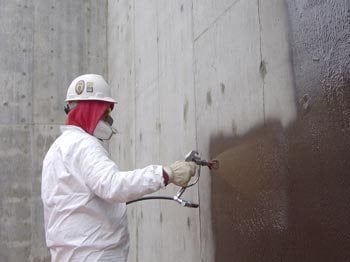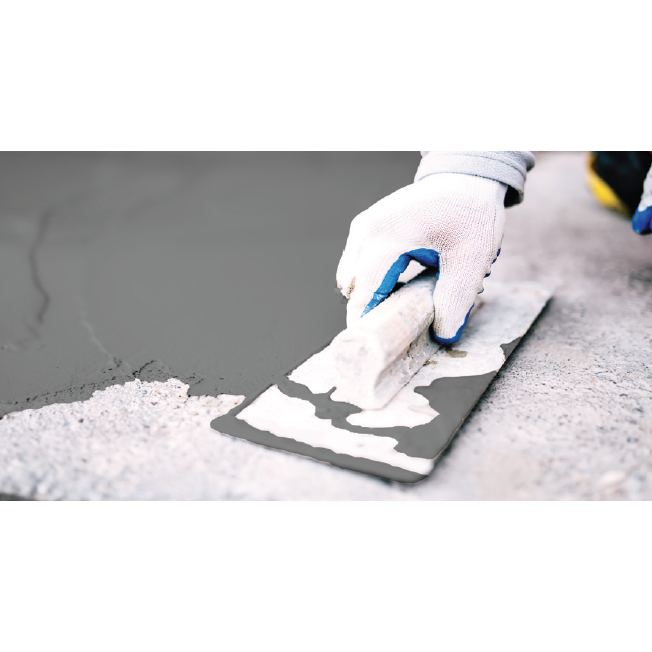How Waterproofing Works: A Detailed Appearance at Techniques and Technologies
Waterproofing is necessary for protecting structures from moisture-related damage. It entails different strategies and innovations that develop obstacles against water invasion. Conventional approaches, such as compacted clay, exist together with modern innovations like liquid-applied membranes. Recognizing the nuances of these approaches is crucial for reliable application. However, the efficiency of any kind of waterproofing option pivots not just on the techniques used but also on ongoing upkeep and inspection. What are the essential aspects that affect lasting performance?
Recognizing the Essentials of Waterproofing
Waterproofing is an essential process that protects structures from water breach, which can bring about significant damage with time. This technique includes the application of numerous materials and methods made to create a barrier against moisture. The main goal is to prevent water from passing through surface areas, which can trigger deterioration, mold and mildew development, and structural instability.Various aspects affect the choice of waterproofing method, consisting of the sort of structure, its area, and environmental conditions. Comprehending the physics of water activity and the buildings of various materials is crucial in choosing an efficient waterproofing solution.Effective waterproofing not only safeguards buildings yet likewise boosts their durability and stability. Usually, it is incorporated right into the style stage of construction to assure comprehensive protection. As recognition of water-related problems grows, the significance of comprehending waterproofing principles ends up being increasingly clear to engineers, home builders, and residential property proprietors alike.
Traditional Waterproofing Approaches
Standard waterproofing techniques have actually been used for centuries, relying on time-tested strategies and products to safeguard frameworks from water damages. Among the earliest approaches includes making use of clay, which, when compacted, creates a natural barrier against moisture. Furthermore, asphalt, a sticky, black product obtained from petroleum, has actually been used for its water-resistant residential properties, usually related to roofing systems and foundations.Another technique entails the application of lime-based plasters, which provide a breathable layer that allows moisture to get away while avoiding water ingress. Thatch roofing, a typical technique still seen in some cultures, provides exceptional waterproofing due to its snugly packed straw layers.Moreover, the usage of stone and brick has projected, as these products are naturally resistant to water when appropriately set up. On the whole, standard waterproofing methods emphasize the significance of picking ideal materials and building techniques to boost sturdiness against water breach.
Modern Waterproofing Technologies
Advancements in modern waterproofing innovations have actually changed the means structures are safeguarded from water damage. Cutting-edge strategies such as liquid-applied membrane layers and advanced sealants have actually boosted the performance and versatility of waterproofing services. These innovations enable smooth application, reducing the risk of leakages and making certain comprehensive coverage over complex surfaces.Moreover, the integration of smart technologies, such as moisture sensors and automated monitoring systems, enables real-time assessment of waterproofing performance. This positive technique promotes prompt upkeep and minimizes long-term fixing costs.Additionally, advancements in spray-applied coverings use fast application and exceptional attachment, adjusting to numerous substratums while offering robust protection. Methods like polymer-modified systems better boost flexibility and longevity, making them appropriate for varied atmospheres. In general, contemporary waterproofing technologies not just alleviate water breach but additionally add to the long life and sustainability of structures, noting a substantial shift in the industry.
Products Made Use Of in Waterproofing
The effectiveness of waterproofing services heavily depends on the materials used in their application. Various products are employed to create obstacles against water access, each with distinct buildings matched for different environments. Generally used products consist of membrane layers, finishes, and sealants.Liquid-applied membrane layers, usually made from polyurethane or acrylic, form a smooth barrier that adjusts to complex surface areas. Sheet membrane layers, typically built from rubber or polycarbonate, deal durability and are ideal for bigger areas. Additionally, cementitious waterproofing materials, composed of cementitious substances, provide excellent adhesion and flexibility.Sealants made from silicone or polyurethane are important for joints and joints, making sure extensive security. Furthermore, sophisticated materials, such as geo-composite membrane layers, integrate several functions, boosting performance. Overall, the choice of waterproofing materials is important in accomplishing lasting and reliable water resistance, customized to certain job requirements and environmental problems.
Common Applications of Waterproofing
Waterproofing plays a necessary function in numerous fields, making sure the durability and stability of frameworks. Typical applications include residential remedies that safeguard homes, business framework that safeguards organizations, and industrial setups that require durable defense against moisture. Comprehending these applications highlights the value of waterproofing in keeping both safety and functionality across different settings.
Residential Waterproofing Solutions
Numerous property owners encounter challenges with moisture breach, making effective domestic waterproofing solutions important. Various methods exist to address this issue, including exterior and interior waterproofing systems. Inside remedies commonly involve the application of sealers and layers to basement wall surfaces, which help stop water infiltration. Exterior techniques usually include the installation of drain systems and water resistant membranes that divert water away from the foundation.Additionally, home owners may consider sump pumps to eliminate water accumulation and dehumidifiers to manage humidity levels. Correct grading and the usage of waterproof deck coating seamless gutters likewise basement flooding repair play an important function in managing water flow around the home. By applying these approaches, homeowners can considerably reduce the threat of water damages and mold development, ensuring a completely dry and safe living environment.

Business Framework Security
Effective waterproofing solutions play a crucial function in the security of commercial framework. Sump pump discharge drainage Omaha. These techniques are essential for safeguarding buildings, car park structures, and bridges from water damages, which can jeopardize structural stability and cause expensive fixings. Common applications consist of the installation of membrane layers, coverings, and sealants that create barriers against moisture infiltration. Locations such as cellars, roofing systems, and outside wall surfaces are usually focused on to guarantee longevity and toughness. Furthermore, waterproofing systems can improve power performance by avoiding water-related concerns that might bring about mold and mildew growth and degeneration. By carrying out durable waterproofing procedures, building owners can protect their investments and keep functional efficiency, eventually adding to the total sustainability of industrial facilities
Industrial Applications Summary
While different markets deal with one-of-a-kind difficulties, the requirement for reliable waterproofing remedies stays a constant in industrial applications. Industries such as manufacturing, building and construction, and power typically run into environments where moisture direct exposure can jeopardize architectural integrity and operational effectiveness. In making centers, waterproofing is vital for shielding equipment and products from water damages. In building, it safeguards foundations and cellars versus groundwater infiltration. The power market relies upon waterproofing for the security of equipment in hydroelectric plants and overseas structures. Additionally, food handling industries make use of waterproofing to ensure hygiene and conformity with security standards. Generally, Resources efficient waterproofing services are crucial for improving resilience, security, and productivity throughout various commercial settings.
Upkeep and Longevity of Waterproofing Solutions
Although waterproofing solutions are made to provide lasting security versus wetness breach, regular upkeep is vital to assure their efficiency and longevity - Landscape drainage Omaha. Routine examinations play a significant function in determining possible issues such as fractures, peeling off, or indicators of water damages. Addressing these problems immediately can protect against further wear and tear and expensive repairs.Additionally, cleaning up the surface area of waterproof locations aids remove dirt and debris that might jeopardize the honesty of the waterproofing obstacle. It's additionally advisable to reapply protective finishings or sealants as advised by manufacturers to maintain perfect performance. Environmental elements, such as UV exposure and extreme climate condition, can impact the lifespan of waterproofing materials, making regular assessment vital
Frequently Asked Questions
Can Waterproofing Be Applied in Winter?
The question of using waterproofing in winter elevates worries regarding bond and curing. Many products might not do at their finest in reduced temperatures, requiring careful selection and consideration of specific standards for efficient application.
How Much Time Does Waterproofing Normally Last?
The duration of waterproofing effectiveness differs based upon materials and environmental variables. Generally, it can last from five to 10 years, but regular maintenance and evaluations are important to guarantee peak efficiency and durability.
Is DIY Waterproofing Effective and Safe?
The performance and security of DIY waterproofing rely on different factors, consisting of material quality and application method. While some individuals attain adequate results, others might come across issues that endanger long-term defense and structural honesty.
What Are the Signs of Failing Waterproofing?
Indicators of stopping working waterproofing consist of visible water discolorations, peeling paint, mold and mildew growth, mildewy odors, and moisture in walls or ceilings - Water Solutions. These signs recommend jeopardized obstacles, demanding timely examination and potential remediation to avoid further damage
Just how Do I Choose the Right Waterproofing Specialist?
